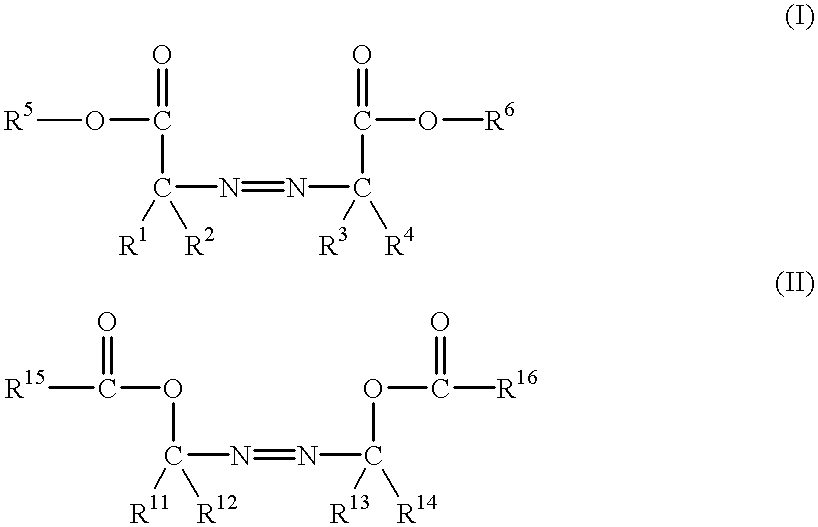Process for the production of allylamine polymer
a technology of allylamine and polymer, which is applied in the field of process for the production of allylamine polymer, can solve the problems of inability to say that the methods (1) to (4) are practical, the method of monoallylamine polymer in organic solvents is not simple, and it is difficult to industrially produce the intended polymer
- Summary
- Abstract
- Description
- Claims
- Application Information
AI Technical Summary
Problems solved by technology
Method used
Image
Examples
example 1
Preparation of Monoallylamine Hydrochloride Polymer by Using Methanol as Polymerization Medium
A one-liter four-necked round-bottom separable flask having a stirrer, a thermometer and a Dimroth reflux condenser (with a calcium tube in which silica gel is sealed) was charged with methanol, and 156.8 g (4.30 mol) of hydrogen chloride was introduced to obtain a methanol solution of hydrogen chloride. The methanol solution was cooled, and 240.1 g (4.20 mol) of monoallylamine was dropwise added thereto. A methanol solution containing the resultant monoallylamine hydrochloride at a monomer concentration of 50% by weight was maintained at 50.degree. C., and 29.1 g (3 mol % based on the monomer) of MAIB was added as a radical polymerization initiator. Further, 24 hours after the polymerization was initiated, 29.1 g of MAIB was again added. The polymerization was carried out at 50.degree. C. for a total time period of 48 hours. Each time when the polymerization initiator was added, heat gener...
example 2
Preparation of Monoallylamine Hydrochloride Polymer by Using Ethanol as Polymerization Medium
A 300-milliliter four-necked round-bottom separable flask having a stirrer, a thermometer and a Dimroth reflux condenser (with a calcium tube in which silica gel is sealed) was charged 75.0 g (0.80 mol) of monoallylamine hydrochloride, 175 g of ethanol was added, and the monoallylamine hydrochloride was dissolved therein. An ethanol solution containing the monoallylamine hydrochloride at a monomer concentration of 30% by weight was maintained at 50.degree. C., and 6.18 g (3.3 mol % based on the monomer) of MAIB was added as a radical polymerization initiator. Further, 24 hours and 48 hours after the polymerization was initiated, each of 6.18g of MAIB was added. The polymerization was carried out at 50.degree. C. for a total time period of 120 hours. Each time when the polymerization initiator was added, heat generation was small, and the temperature was increased by 2.degree. C. or smaller.
T...
example 3
Preparation of Methanol Solution of Monoallylamine Polymer Free of Addition Salt
A one-liter three-necked round-bottom flask having a stirrer, a thermometer and a reflux condenser was charged with 200.0 g (1.64 mol) of the monoallylamine hydrochloride polymer obtained in Example 1, 50 ml of methanol was added, and the monoallylamine hydrochloride polymer was dispersed therein. While the dispersion was stirred with cooling, 320.4 g of a methanol solution having a sodium methoxide concentration of 28% by weight (1.66 mol) was added little by little, and the mixture was allowed to react at room temperature for 1 hour.
Then, the mixture was stirred under heat at 50.degree. C. overnight and then allowed to cool, and formed sodium chloride was removed, to give an absolute methanol solution of a free monoallylamine polymer. Methanol was distilled off from the above solution, then, n-propanol was added, a small amount of sodium chloride which precipitated was filtered off, to give an n-propan...
PUM
| Property | Measurement | Unit |
|---|---|---|
| Fraction | aaaaa | aaaaa |
| Fraction | aaaaa | aaaaa |
| Fraction | aaaaa | aaaaa |
Abstract
Description
Claims
Application Information
 Login to View More
Login to View More - R&D
- Intellectual Property
- Life Sciences
- Materials
- Tech Scout
- Unparalleled Data Quality
- Higher Quality Content
- 60% Fewer Hallucinations
Browse by: Latest US Patents, China's latest patents, Technical Efficacy Thesaurus, Application Domain, Technology Topic, Popular Technical Reports.
© 2025 PatSnap. All rights reserved.Legal|Privacy policy|Modern Slavery Act Transparency Statement|Sitemap|About US| Contact US: help@patsnap.com



